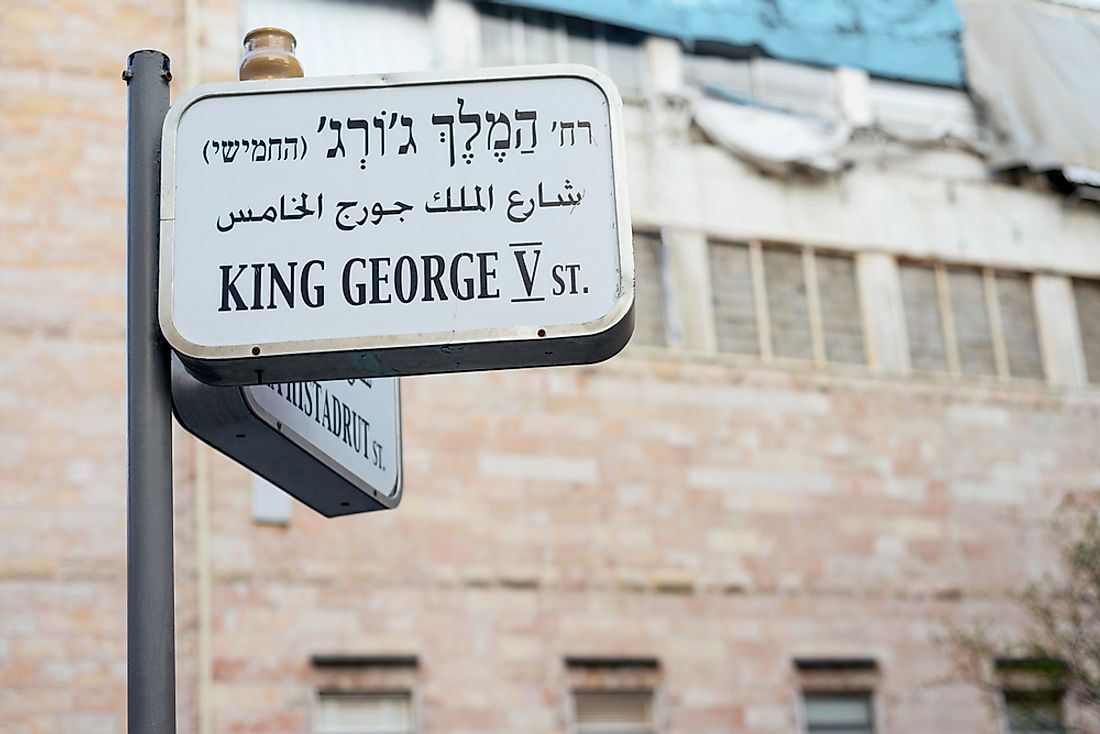What Language is Spoken in Palestine?

Palestine refers to a geographical and historical region in the Middle East. The modern state of Palestine has non-member observer state status in the United Nations being recognized by only 136 UN members. As Palestine is not recognized as a fully sovereign country, the Palestinian territories are under the control of Israel. Israel and Palestine dispute the control of the territories of the West Bank, including East Jerusalem, and the Gaza Strip. Palestinian Arabic is the most spoken language in Palestine, which is of no surprise given that 83% of the population in the West-Bank and East Jerusalem are Palestinian Arabs. The rest of the population in the region is predominantly Jews who have a significant 17% part of the population. Palestinian Arabs also account for 98.7% of the population on the Gaza strip.
Languages of Palestine
The official language in Palestine is Palestinian Arabic which is a subgroup of dialects belonging to native Arabs in the Levant and those belonging to the Mediterranean East Coast. Standard Arabic is also the official language in Palestine and is mainly used for official purposes. Other unofficial languages include Hebrew, Armenian, and Domari. English and French are the most common foreign languages due to colonial influences. The various dialects and languages are spoken in various regions depending on religion, social status, social grouping among other factors.
History of Palestinian Arabic
Palestinian Arabic belongs to the Afro-Asiatic family of languages. The language was however not spoken in the region up until the 7th century when the Arab language was adopted. According to historic Palestinian Jewish and Christian Literature, inhabitants of the territory predominantly spoke Palestinian Aramaic and Hebrew to a lesser extent. There was, however, a grouping of people who spoke Arabic in the Jordanian desert that did not have significant lingual influence in the region. Indeed the Arab speaking group often opted to use Aramaic as their written language of choice as evidenced by Nabataean Language texts.
The Transition To Palestinian Arabic
It is hypothesized that following the Arab control of the region, the Upper classes quickly gained fluency in the new language to maintain the status and activities leading to an urban dialect. Arabic soon spread to the rural Aramaic speaking areas due to the influence from the elite hence the emergence of rural Palestinian dialects. The rural dialect has a few common features with the Aramaic language which is still retained by a few Aramaic speaking villages. The Urban dialect had a more stringent evolution due to the need to maintain smooth communication with other Arab speakers from Syria and Egypt during trading.
Palestinian Urban Dialects
Palestinian urban dialects “Madani” are quite similar to the northern Levantine Arabic dialects found in Syria and Lebanon and the old Arabic, qeltu dialect found in southern Turkey and northern Syria and Iraq. The Nablus dialect is commonly found among Samaritans who have maintained the dialect in its purest form. The Nablus dialect gets its distinction due to the stressed syllable accent. Each syllable is normally articulated separately which makes it sound slow and sluggish.
Palestinian Rural Dialect
The Palestinian rural dialects, which are commonly known as “fallahi,” bear similarity to other rural languages. The rural variant also keeps a distinction between feminine and masculine pronouns in their plural form, unlike the urban dialect where the distinction is not significant. The rural variant is divided into three groups namely the Central rural Palestinian, Southern outer rural Levantine Arabic, and North Galilean rural dialect. The Central rural Palestinian form is mainly spoken in Nazareth, Bethlehem, and Jaffa, and the southern outer rural Levantine Arabic is spoken to the south of the Ashdod-Bethlehem/Isdud line.
Current Evolution of the Language
In the 20th century, it was observed that the urban dialect was increasingly bearing similarity to the rural dialect. This trend was due to the partition of the Levant into some counties and was further enabled by the infiltration of the rural dialect in urban areas due to the effects of urbanization.











